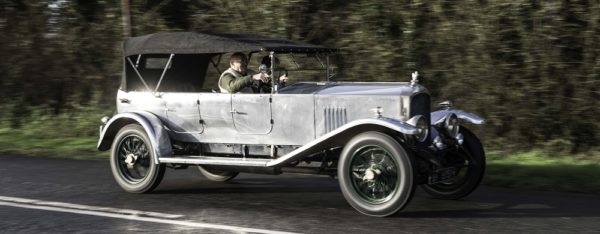
Seen at the Royal Oak, Much Marcle, Herefordshire on New Year’s Day 2022, this Vauxhall 23-60 must be very nearly 100 years old: the model was announced in July 1922. The 23-60’s standard tourer Kington body was described as “preserving that greyhound look so characteristic of the Vauxhall car”. We think that this picture shows just such a body.
The car shared many parts with Vauxhall’s much more powerful 30-98. It was developed from the Vauxhall 25 which had given such superb service during World War I. Its reliability made Vauxhall’s name for dependability. The 23-60 remained in production until the introduction of the six-cylinder Burt-McCollum single-sleeve-valve Vauxhall 25-70, announced in October 1925. One feature that clearly distinguishes the 23-60 from the 30-98 and 25 is the driver’s door, not present on the other two cars.
The engine is essentially the four-cylinder engine of the preceding 25 hp car which chief engineer C E King had modified by adding an overhead valve head. Its capacity is 3,969cc. To aid smooth running in such a large 4-cylinder engine, it was designed with the harmonic balancer invented by Dr F W Lanchester at the centre of its crankshaft. This had two weighted drums driven at twice crankshaft speed, one by a helical gear wheel attached to the crankshaft and the other by the primary drum. Few surviving cars retain the balancer.
The car in our Slider has front-wheel brakes. These were offered a year after launch on new cars, for an additional £55. A year later again they were standardised on the 23-60 in July 1924.
Photo by Peter McFadyen. See his website: http://petermcfadyen.co.uk







Leave a Comment